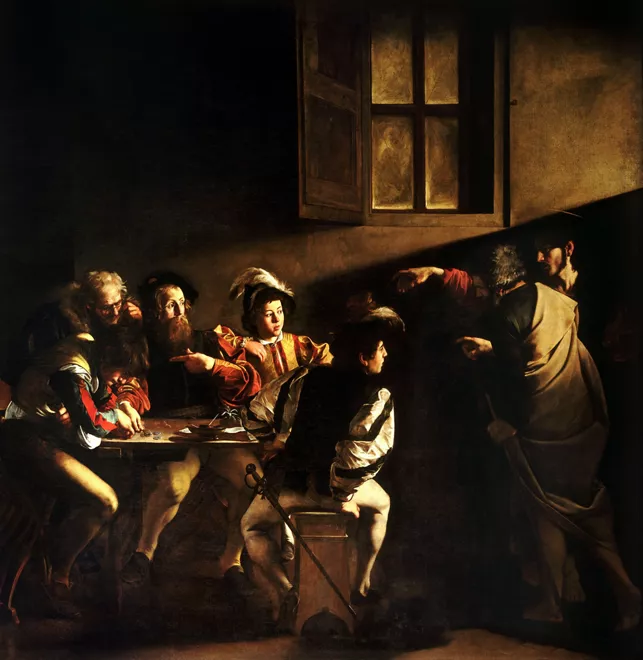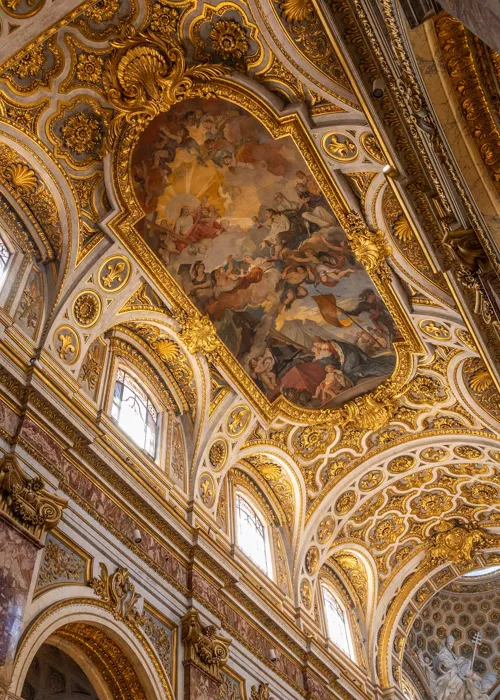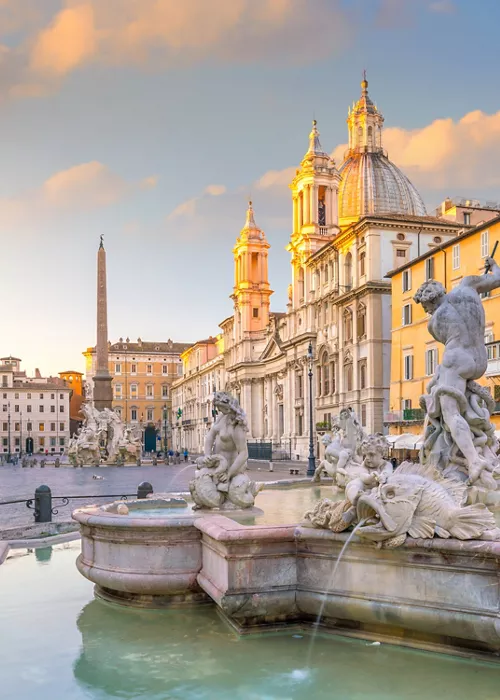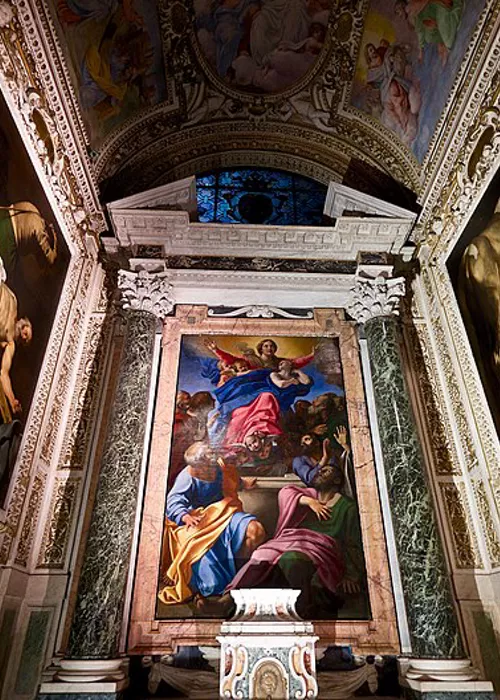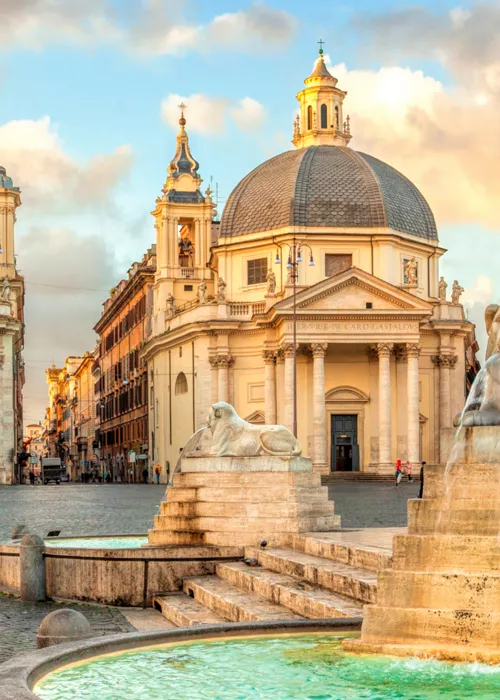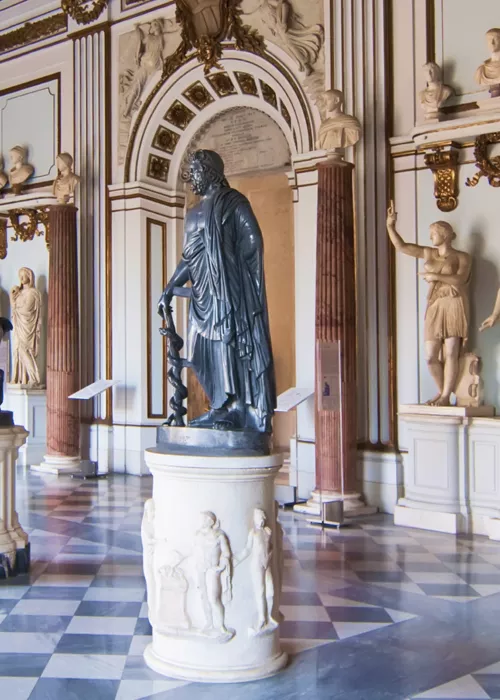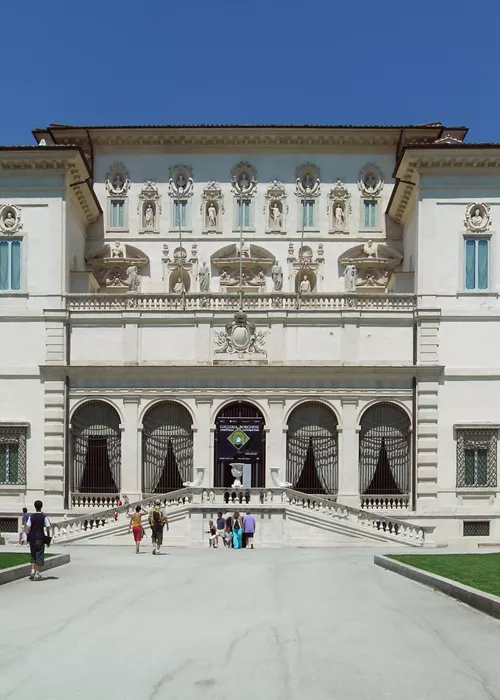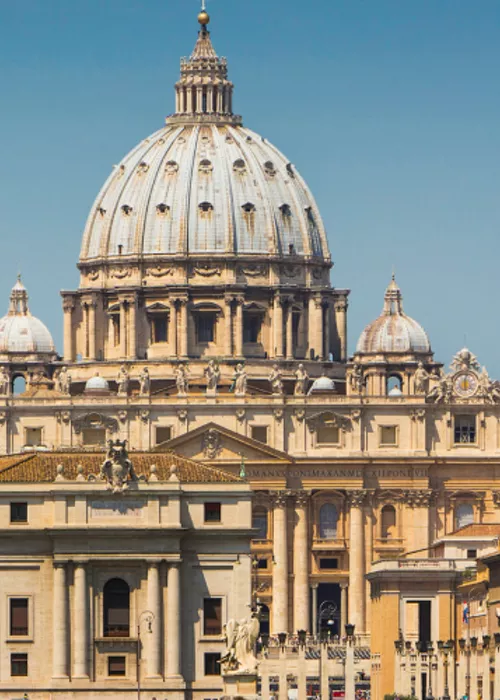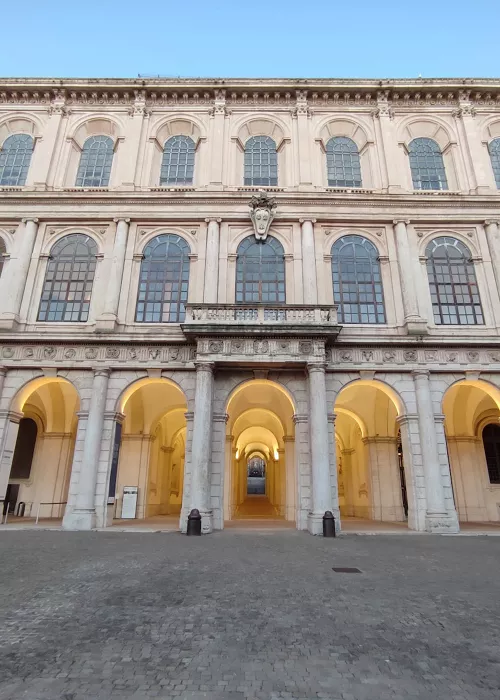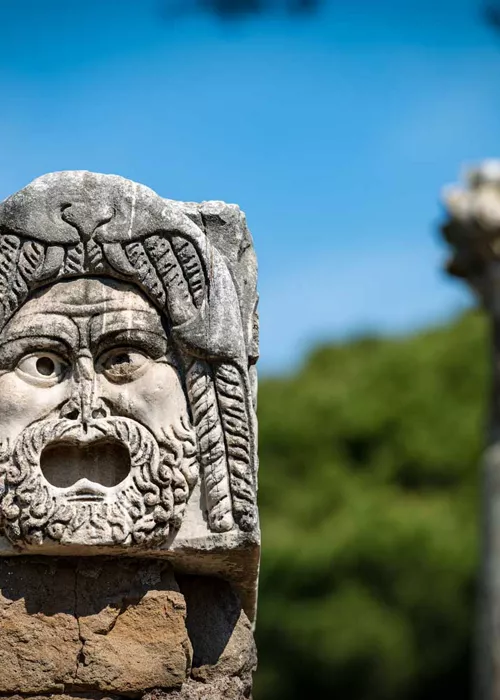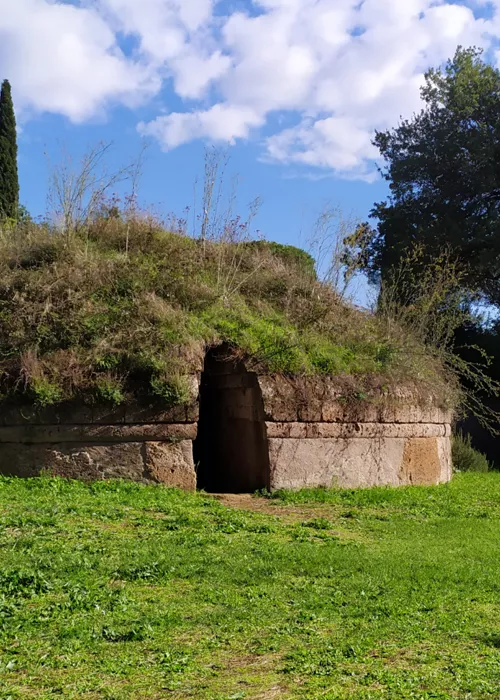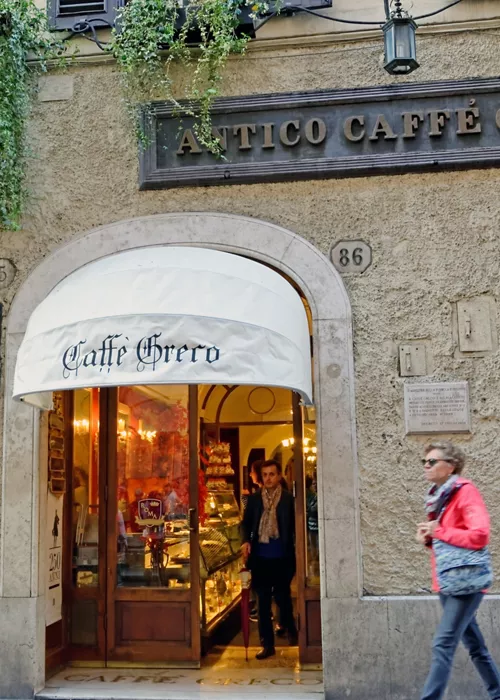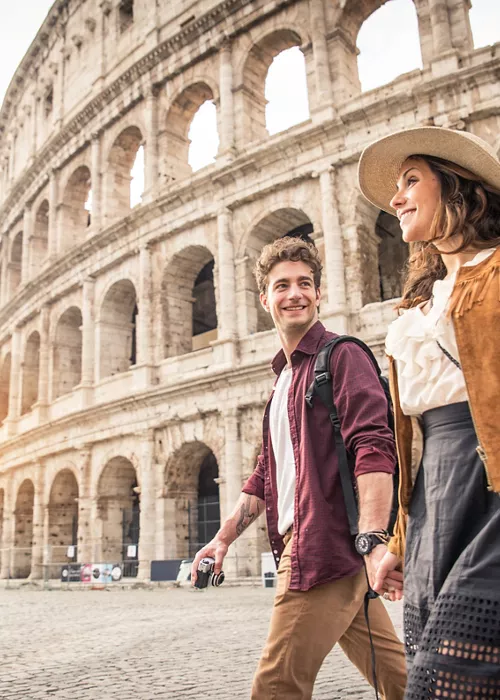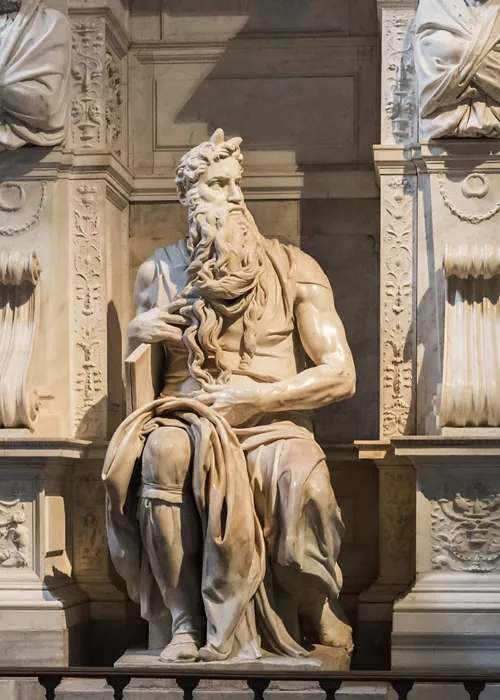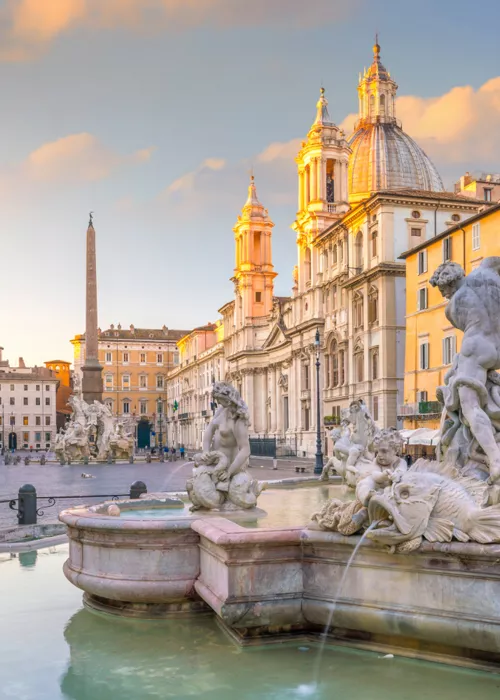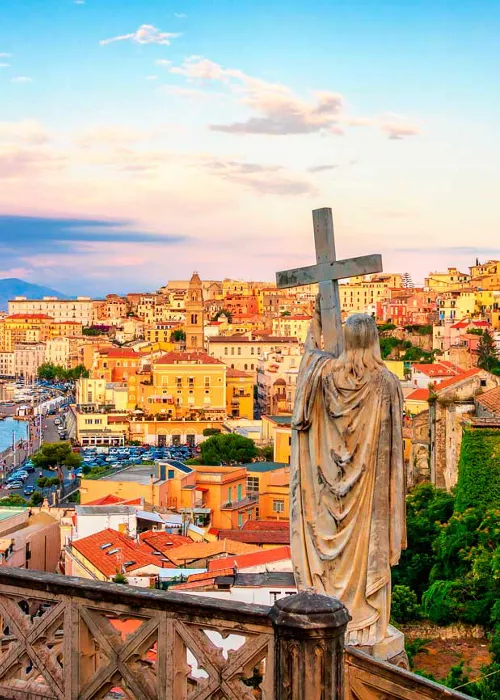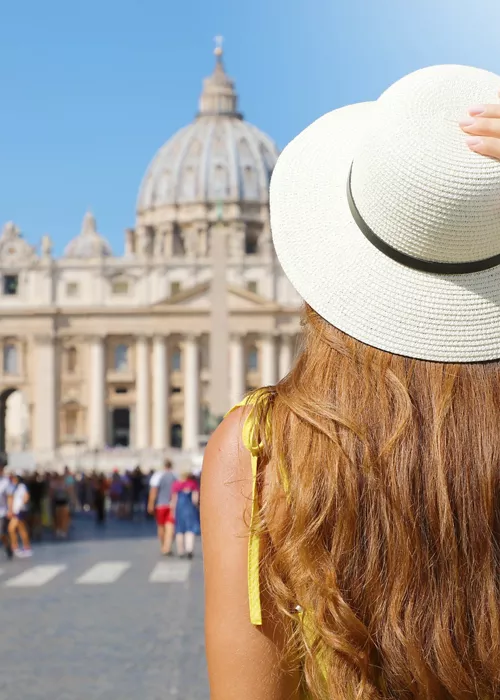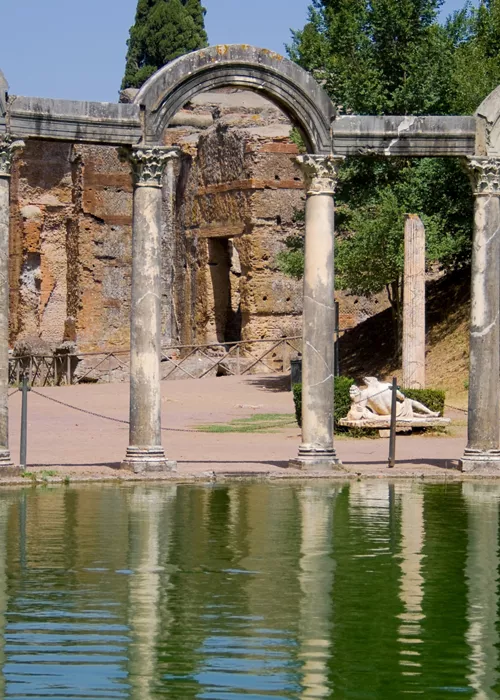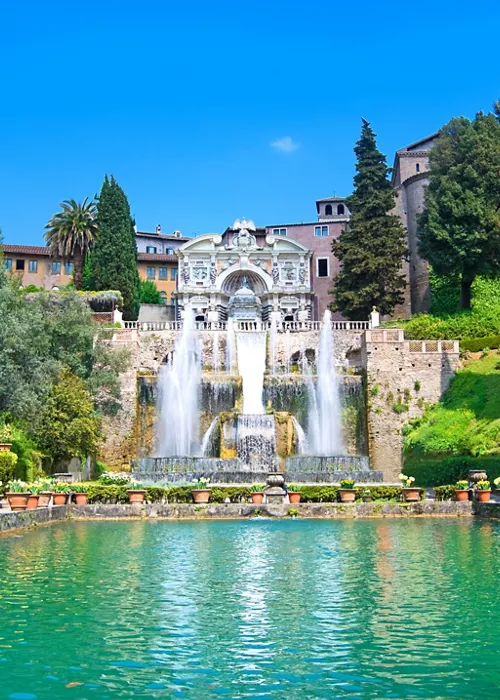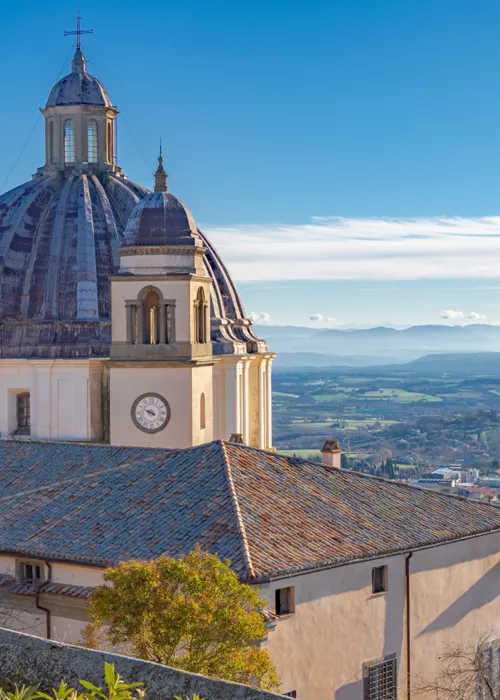The works by Caravaggio in Rome
3 minutes
Church of San Luigi dei Francesi
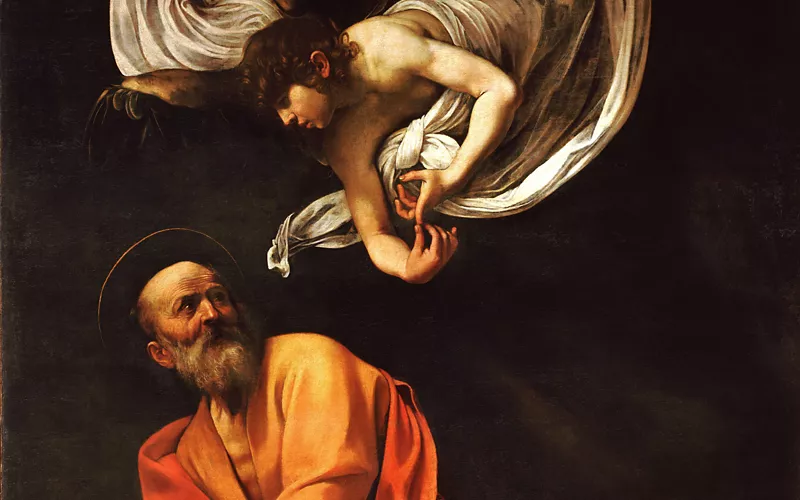
Our tour begins in the San Luigi dei Francesi Church, a short distance from Piazza Navona. In the chapel at the end of the left nave, there are three pieces by Caravaggio, together they make up the Cycle of Saint Matthew. The paintings sum up the life of the apostle in three episodes: the Calling of Saint Matthew, The Inspiration of Saint Matthew, the Martyrdom of Saint Matthew. The scene of the Calling leads us in the half-light into a room populated by tax collectors intent on counting money, disrupted by a divine light Jesus Christ, on the right, has just raised his arm to indicate the future saint and calls him to join the group of the apostles. The painting of Saint Matthew and the angel distinguishes itself for the direct and intense relationship between the Evangelist and the messenger sent by God who came down to inspire him in the writing of the Scripture. The depiction of the Martyrdom in the last painting of the cycle is violent and dramatic.
Basilica of St. Augustine in Campo Marzio
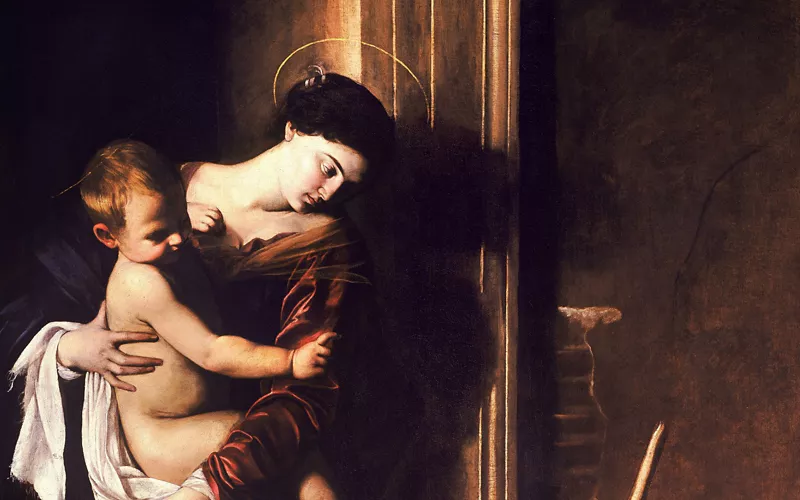
Slightly more than 200 metres separate San Luigi dei Francesi from the Basilica of St. Augustine, where we stop to admire the Pilgrim’s Madonna or the Madonna of Loreto, a piece considered scandalous by Caravaggio’s peers: Mary too humble and demure, leaning casually against a door jamb, legs crossed too realistic the two poor pilgrims offering their bare, dirty feet close-up.
Basilica of Santa Maria del Popolo
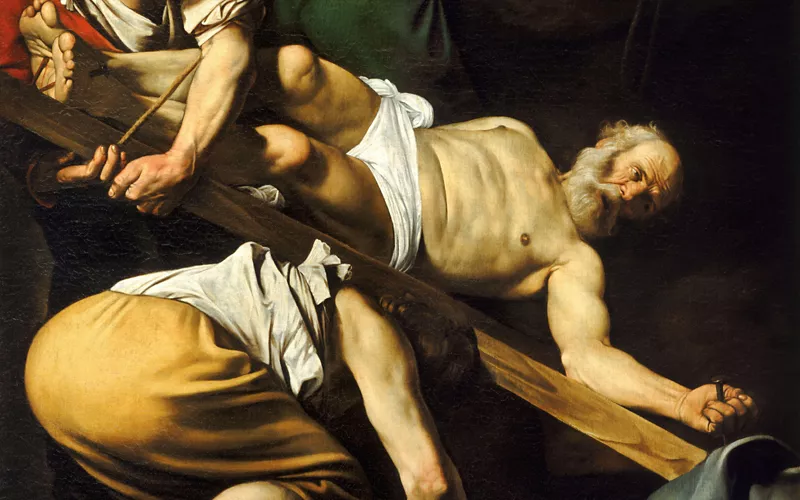
In Piazza Santa Maria del Popolo, in the basilica of the same name, it is possible to admire two other great masterpieces by the artist: the Conversion on the Way to Damascus and the Crucifixion of Saint Peter. In the latter piece, the men depicted while pulling up the cross seem more like busy labourers than executioners. Once more, the realism dominates the scene and renders a moving dramatic effect.
Galleria Doria Pamphilj
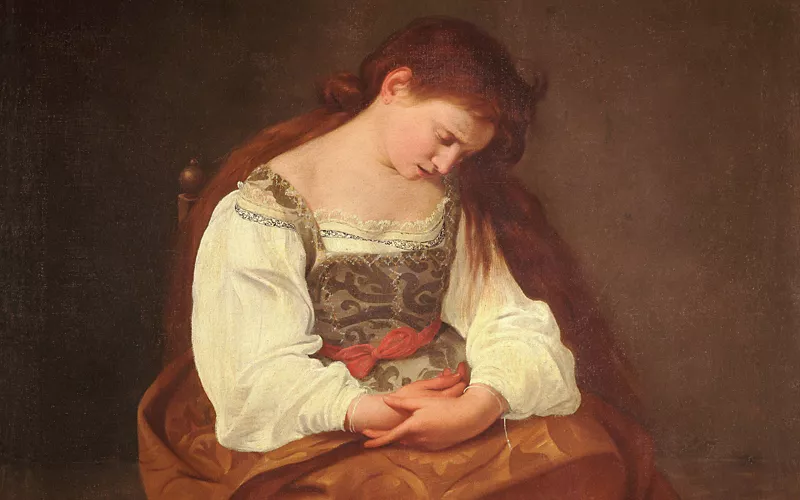
Caravaggio often chose his muses among the prostitutes he frequented. Like Anna Bianchini, who posed for the Penitent Magdalene: her face looking down lined by a tear, several pieces of jewellery to her right thrown on the floor symbolising the renouncing of worldly vanity. To admire this painting we visit the Galleria Doria Pamphilj, which also holds two other works by Caravaggio: the Rest on the Flight into Egypt and the John the Baptisti, depicted as a young nude man embracing a ram. An identical copy of the piece is kept in the Musei Capitolini, which also exhibits The Fortune Teller, a very famous piece copied by many Caravagesques.
Galleria Borghese
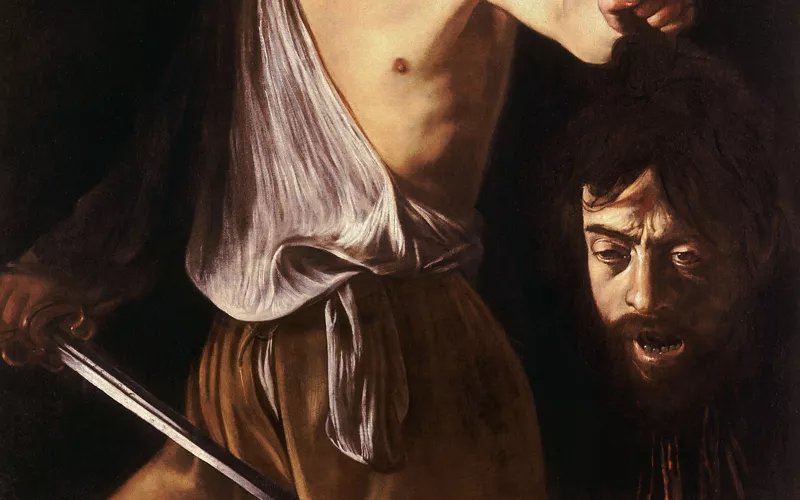
But the highlight of our tour is without a doubt the Galleria Borghese, which boasts the broadest collection of Caravagesque works held in a single location: Boy with a Basket of Fruit, Sick Young Bacchus (possible self-portrait), Madonna with Child and Saint Anne, Saint Jerome Writing, John the Baptist and David with the Head of Goliath, where Caravaggio depicts himself in the decapitated giant. The face of David, in this painting, seems to express compassion towards the head of his dead enemy.
Vatican Museums
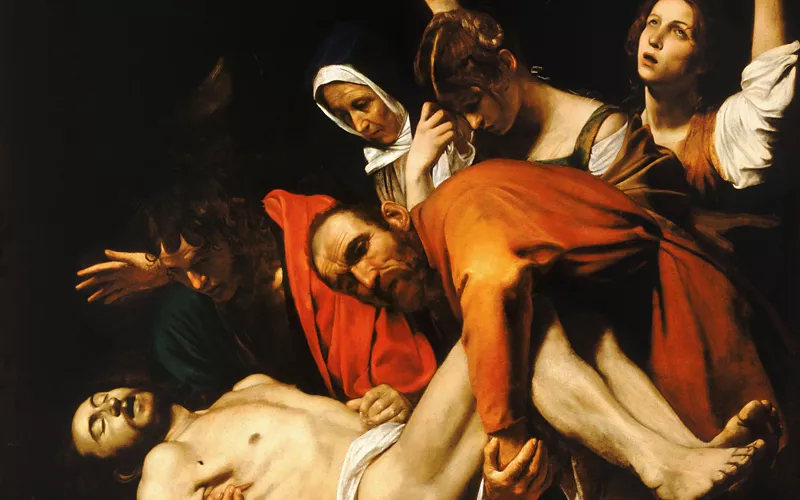
The Vatican Museums hold only a single piece but an extremely beautiful one: The Entombment of Christ. It is one of the few paintings by Caravaggio to have obtained unanimous approval by his peers, such as Giovanni Baglione and Giovan Pietro Bellori. Of all his paintings, this is certainly the most monumental.
Palazzo Barberini
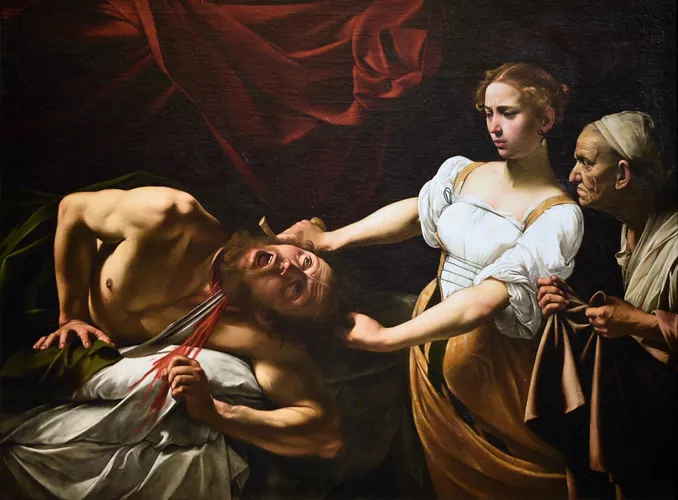
Even more controversial were the reactions to Judith Beheading Holofernes, kept at Palazzo Barberini: the rawness of the scene caused horror in many people at the time. The piece influenced many artists, like Artemisia Gentileschi and Francisco de Goya. Also found at Palazzo Barberini is the famous Narcissus contemplating his own reflection in the water.
Palazzo Corsini
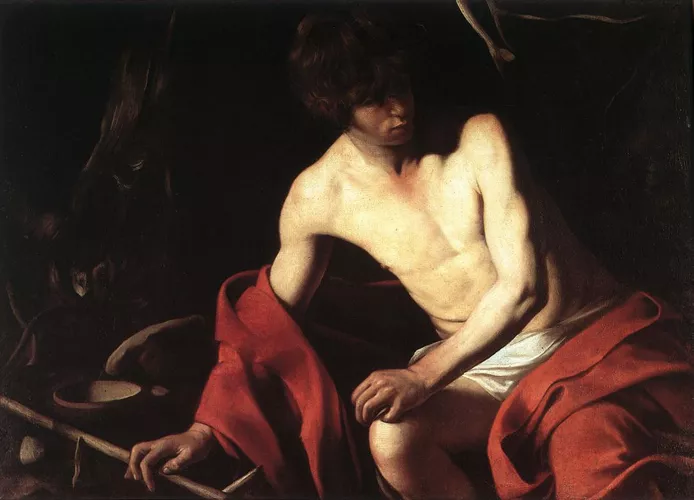
Another John the Baptist by the artist (it is said he painted nine if we consider the two identical versions of the Galleria Doria Pamphilj and the Capitolini Museums) is found at Palazzo Corsini. The iconography of the subject is so unusual that the young man can be identified as the Baptist only thanks to the inclusion of several distinctive symbols, such as the rod and the camel skin.

